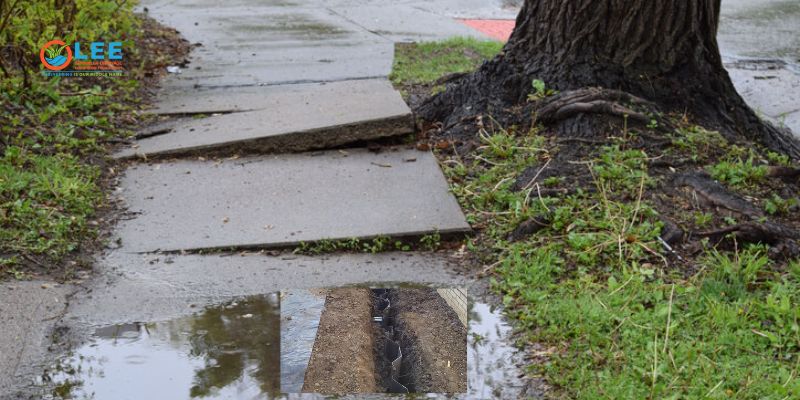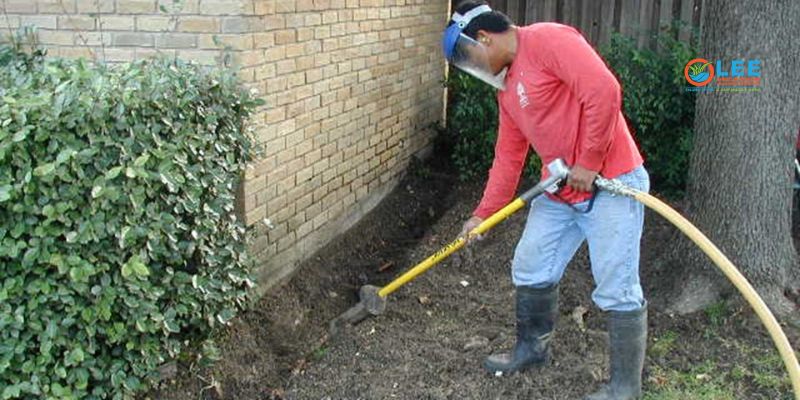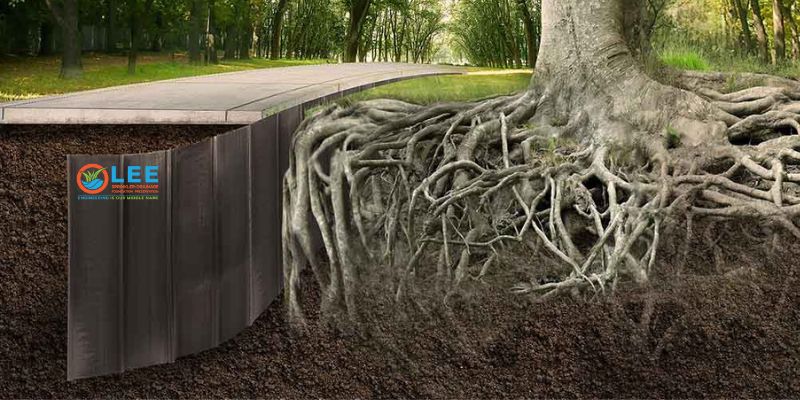Root barriers are an innovative solution designed to address the challenges posed by the aggressive root systems of trees and plants. These barriers, often made of durable materials, serve various purposes, from controlling root growth to preserving infrastructure integrity.
Their applications span various industries, including urban planning, landscaping, and agriculture. Understanding root barriers’ multiple roles and benefits is essential to maximizing land management and preserving the harmony between nature and man-made structures.
Understanding Root Barriers
Root barriers, also known as root control or pruning barriers, are physical barriers placed underground to restrict the spread of roots beyond a specific area. These barriers are commonly made of high-density polyethylene (HDPE), fiberglass, or metal. They are installed vertically or horizontally, creating a barrier that diverts or hinders root growth, preventing encroachment into undesirable areas.
Applications in Urban Landscaping and Infrastructure
1. Preservation of Infrastructure
In urban landscapes, the expansive nature of tree roots constantly threatens underground infrastructure like roads, sidewalks, and utility lines. Root barriers are pivotal in protecting these structures from damage caused by root invasion. By installing barriers around these vital areas, the growth of roots can be directed away from the infrastructure, reducing the risk of damage and the subsequent need for repairs.
2. Sidewalk and Driveway Protection

Tree roots often disrupt sidewalks and driveways, causing uneven surfaces that pose hazards to pedestrians and vehicles. Placing root barriers along the edges of walkways and driveways helps to contain root growth, preventing these disturbances and ensuring safer pathways.
3. Utility Line Preservation
The root systems of trees can encroach on underground utility lines, leading to potential damage and costly repairs. Root barriers act as a protective shield, keeping roots from intertwining with and damaging these essential utility systems.
4. Landscape Design and Garden Maintenance
In landscape design, root barriers create distinct zones within gardens or parks. They aid in segregating different plant species or landscape features, preventing aggressive root systems from overtaking specific areas, and preserving the intended design.
5. Green Roofs and Living Walls
Root barriers, such as green roofs and living walls, are crucial in green infrastructure. They help control root growth within these structures, ensuring that the plants remain confined to their designated areas without causing damage to the building or compromising its integrity.
6. Sports Field Maintenance
Athletic fields benefit from root barriers, particularly those with natural grass surfaces. These barriers prevent invasive roots from disrupting the playing surface, maintaining the integrity of the field, and ensuring a safe and even playing environment.
7. Protection of Paved Surfaces
Areas with paved surfaces, like parking lots and pathways, can benefit from root barriers. These barriers prevent roots from damaging the integrity of the paved surfaces, extending their lifespan and reducing maintenance costs.
Agricultural Implementations
1. Crop Protection
In agriculture, root barriers play a crucial role in managing the spread of roots in crop fields. Farmers utilize these barriers to prevent invasive root systems from encroaching on other crop areas, preserve the desired cultivation zones, and prevent competition for essential resources like water and nutrients.
2. Orchard and Vineyard Management
Root barriers are also instrumental in orchards and vineyards. They assist in delineating areas for specific types of trees or vines, ensuring their root systems remain within designated zones. This helps maintain the health and productivity of the cultivated plants while minimizing interference from neighboring roots.
3. Urban Tree Management
Urban areas often need help with street trees and their expansive root systems. Root barriers help contain root growth around street trees, preventing damage to nearby infrastructure, such as building foundations and underground pipes. This application ensures the health of the trees while minimizing potential issues caused by their root systems.
Environmental and Ecological Significance
1. Erosion Control
Root barriers aid in controlling soil erosion by stabilizing the ground with their root-restricting properties. They can be strategically placed in vulnerable areas to prevent soil displacement and maintain stability, particularly in regions prone to erosion.
2. Ecological Restoration
In ecological restoration projects, such as reforestation or habitat rehabilitation, root barriers can be employed to guide the growth of newly planted vegetation. By containing roots within defined spaces, these barriers promote the development of healthy and sustainable ecosystems while reducing competition among different species.
3. Protection of Historical Sites
Historical sites with delicate structures and foundations can benefit from root barriers. By installing these barriers, the root systems of nearby trees are controlled, safeguarding the integrity of the historical structures and ensuring their preservation for future generations.
Challenges and Considerations
While root barriers offer diverse benefits, their application requires careful consideration and planning.
1. Proper Installation
Correct installation is crucial for the effectiveness of root barriers. Improper placement or damage during installation can compromise their functionality, leading to root penetration and potential infrastructure damage.
2. Regular Maintenance

Periodic monitoring and maintenance are necessary to ensure the barriers remain intact and functional. Over time, root barriers may degrade or shift, diminishing their ability to contain root growth effectively.
3. Root Barrier Depth and Material Selection
The depth and material of the barrier should be chosen according to the application’s specific needs. Factors like the type of soil, the depth of root systems, and the expected lifespan of the barrier must be considered for optimal performance.
Future Innovations and Advancements
As technology and material sciences progress, developing more durable, environmentally friendly, and cost-effective materials for root barriers is anticipated. Additionally, advancements in installation methods and monitoring systems may further enhance the efficiency and longevity of these barriers.
Final Thoughts
The multifaceted applications of root barriers extend beyond the conventional realms of infrastructure and agriculture, encompassing diverse sectors such as landscape design, historical preservation, sports field maintenance, and conservation efforts. Their ability to regulate and contain root growth proves instrumental in maintaining the integrity of various structures, preserving natural environments, and optimizing land management across a spectrum of industries. As innovations in materials and installation techniques continue, the adaptability and efficacy of root barriers are expected to evolve further, offering sustainable solutions to a broader array of land and environmental management challenges.

